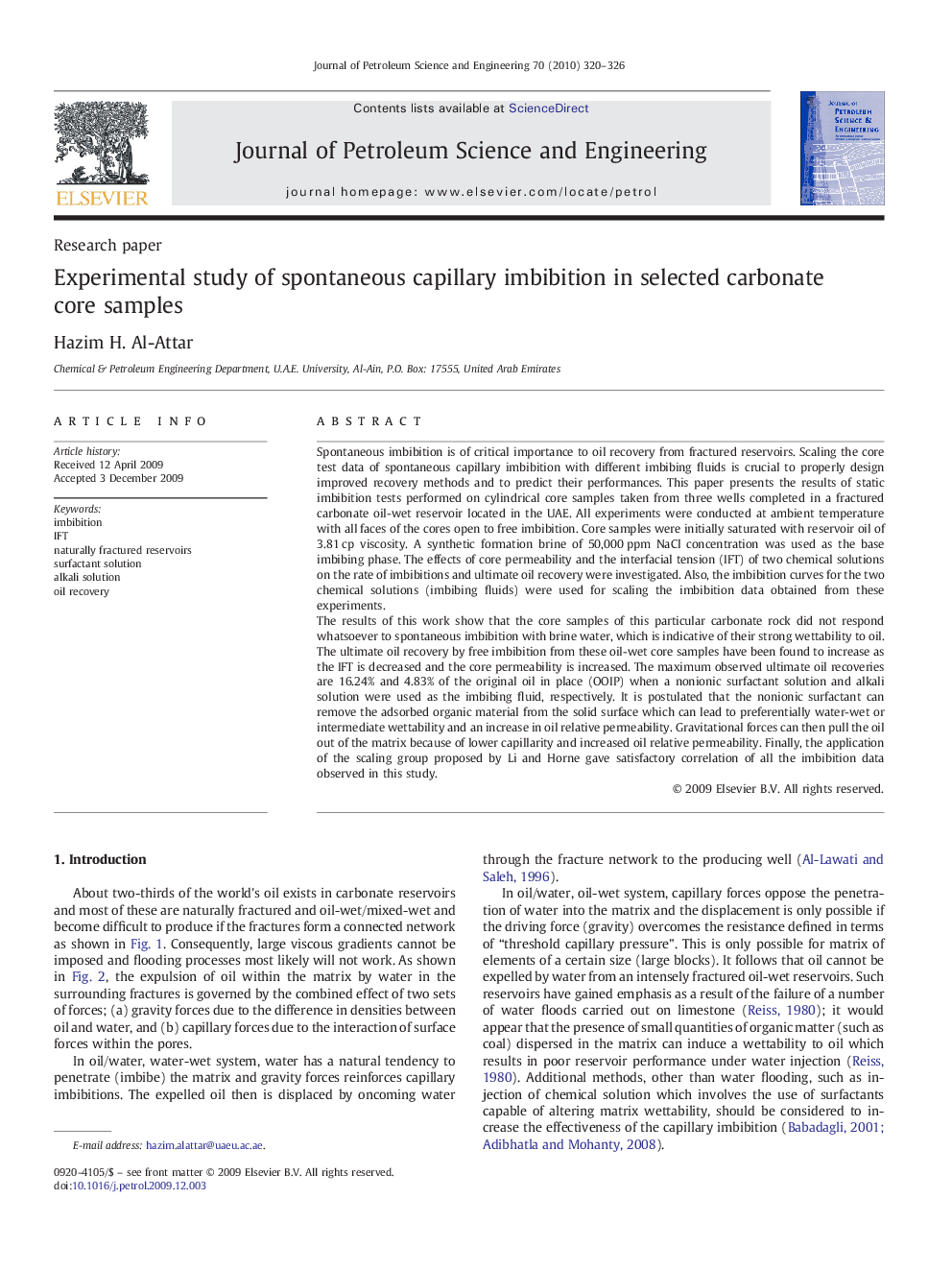| Article ID | Journal | Published Year | Pages | File Type |
|---|---|---|---|---|
| 1755855 | Journal of Petroleum Science and Engineering | 2010 | 7 Pages |
Spontaneous imbibition is of critical importance to oil recovery from fractured reservoirs. Scaling the core test data of spontaneous capillary imbibition with different imbibing fluids is crucial to properly design improved recovery methods and to predict their performances. This paper presents the results of static imbibition tests performed on cylindrical core samples taken from three wells completed in a fractured carbonate oil-wet reservoir located in the UAE. All experiments were conducted at ambient temperature with all faces of the cores open to free imbibition. Core samples were initially saturated with reservoir oil of 3.81 cp viscosity. A synthetic formation brine of 50,000 ppm NaCl concentration was used as the base imbibing phase. The effects of core permeability and the interfacial tension (IFT) of two chemical solutions on the rate of imbibitions and ultimate oil recovery were investigated. Also, the imbibition curves for the two chemical solutions (imbibing fluids) were used for scaling the imbibition data obtained from these experiments.The results of this work show that the core samples of this particular carbonate rock did not respond whatsoever to spontaneous imbibition with brine water, which is indicative of their strong wettability to oil. The ultimate oil recovery by free imbibition from these oil-wet core samples have been found to increase as the IFT is decreased and the core permeability is increased. The maximum observed ultimate oil recoveries are 16.24% and 4.83% of the original oil in place (OOIP) when a nonionic surfactant solution and alkali solution were used as the imbibing fluid, respectively. It is postulated that the nonionic surfactant can remove the adsorbed organic material from the solid surface which can lead to preferentially water-wet or intermediate wettability and an increase in oil relative permeability. Gravitational forces can then pull the oil out of the matrix because of lower capillarity and increased oil relative permeability. Finally, the application of the scaling group proposed by Li and Horne gave satisfactory correlation of all the imbibition data observed in this study.
